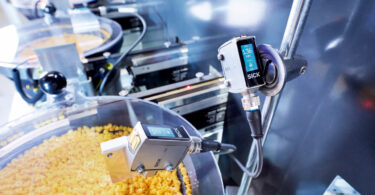How machine learning methods from SICK allow for optimization and process reliability
In recent years, machine learning methods based on deep neural network models have made breakthrough strides in the automated perception of data, including the interpretation of images, speech, and text. Machine learning is implemented in various manufacturing processes now, but there is much need for this to continue in the future to automate processes and improve manufacturing.
Industrial factory automation relies on various sensors like cameras, LiDAR, light curtains, RFID, and encoders to provide the needed perception capabilities for numerous applications (i.e., sorting, robot picking, and quality inspection). Computational algorithms, broadly referred to as Artificial Intelligence (AI), process the raw sensor data to extract relevant information and to form decisions. Traditional algorithms consist of rules and mathematical operations designed and parameterized by human experts. For example, one simple application is to discard a produced item if a hole dimension is not within a given tolerance threshold. Both the mathematical operations to extract the hole dimension from an image and to set the tolerance threshold value are design questions for human domain experts.
We are discussing five major opportunities with implementing machine learning for advancing manufacturing.

Opportunity #1 – Automating Manufacturing Processes
Machine learning allows manufacturers to automate tasks that may not have been possible by means of conventional algorithms. Until now, such tasks have either required the interpretation skills of a human or were simply not possible at all. This technology excels in applications with large variations in products or by changing light or background conditions.
Opportunity #2 – Measurement Utilization
While predictions around AI typically often revolve around solving new automation applications, an overlooked aspect is to utilize improved perception skills to simplify existing applications with a more efficient utilization of the measurement data.
Opportunity #3 – Streamlining Machine Learning
Much of the complexity behind machine learning can be hidden in software tools to simplify the procedure, making it more accessible for a wide group of people. An algorithm expert will not be needed to solve highly complex machine vision automation tasks and more simple tasks can be predicted to be addressed using machine learning.
Opportunity #4 – Continuous Process Improvements
A deployed machine learning system can continue to provide data, allowing for the continuous increase of the training data set. This leads to the possibility to retrain the network models to make improvements to existing automated manufacturing processes.
Opportunity #5 – Sensor Data Quality
As low power edge computing becomes more powerful, deep neural networks and other machine learning models can be applied deeper into the sensors with the aim of producing higher-quality measurements. Further use could be sensor self-monitoring to detect operation anomalies, such as dirt or moisture on a camera lens.
Want to learn more about machine learning principles and how it can work for you! Contact a SICK representative today!





